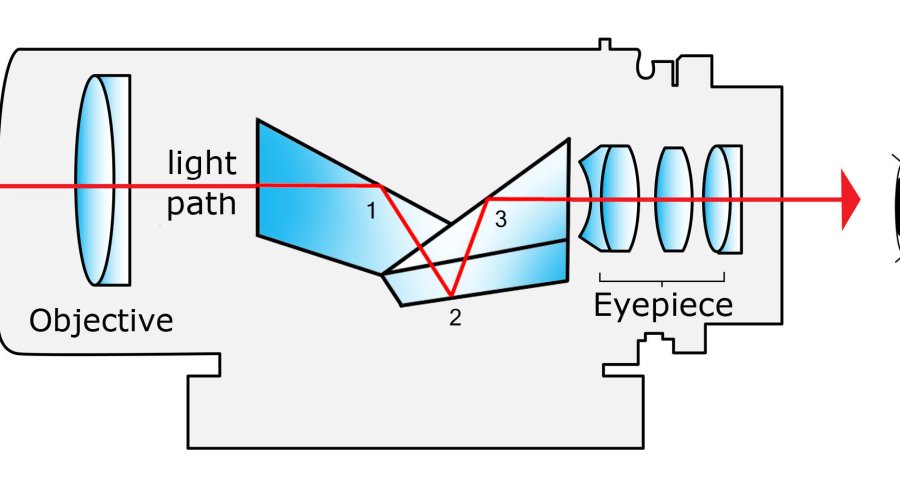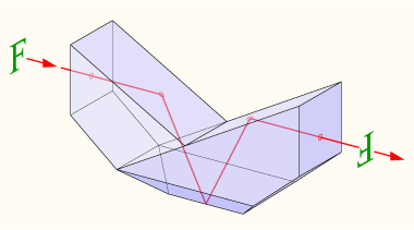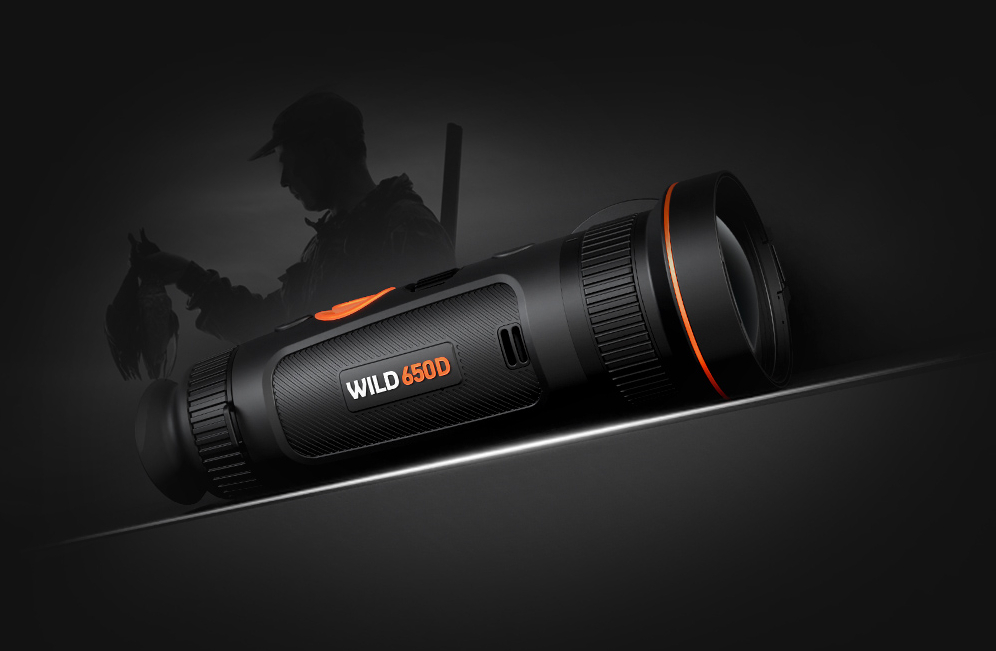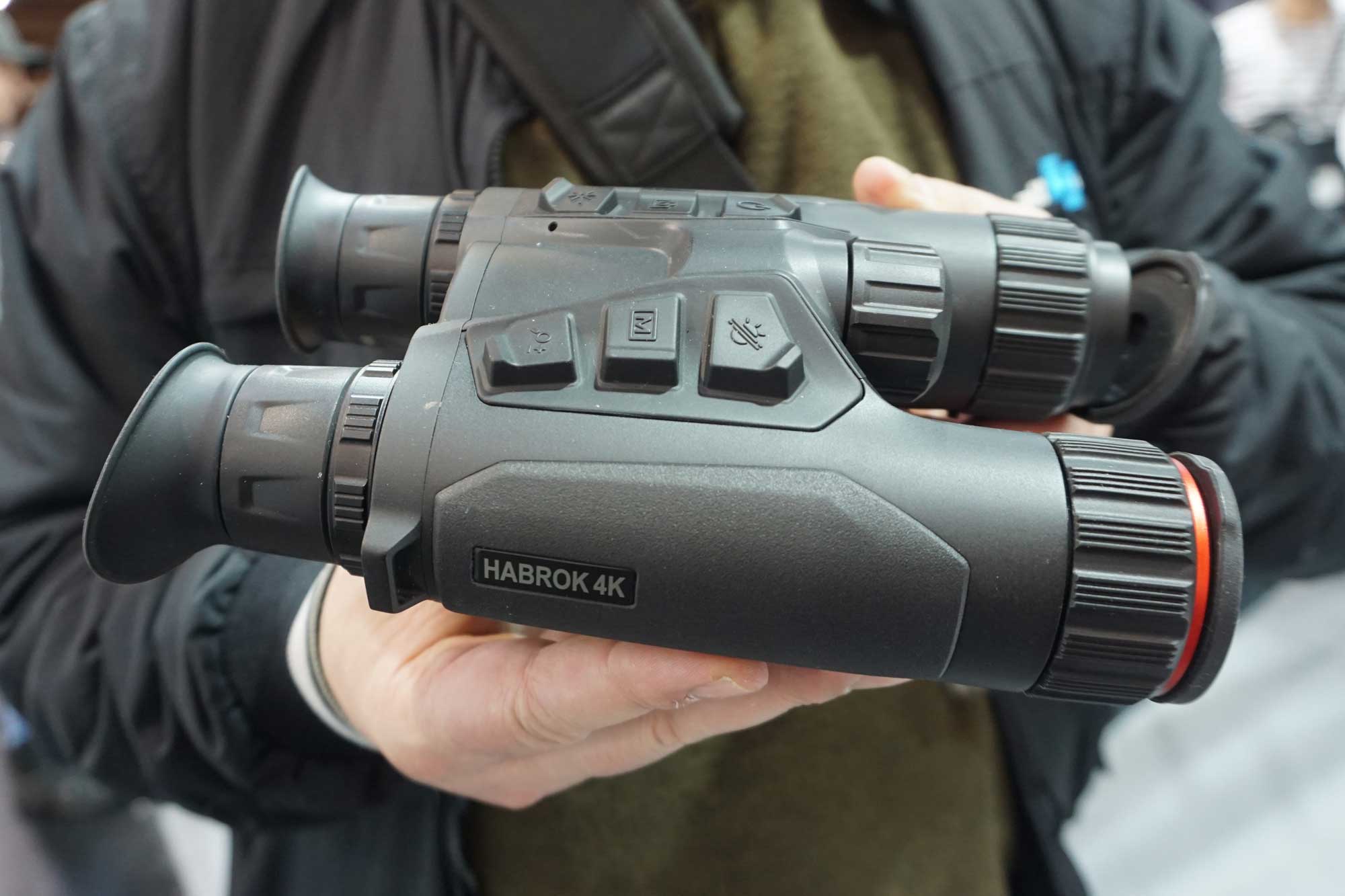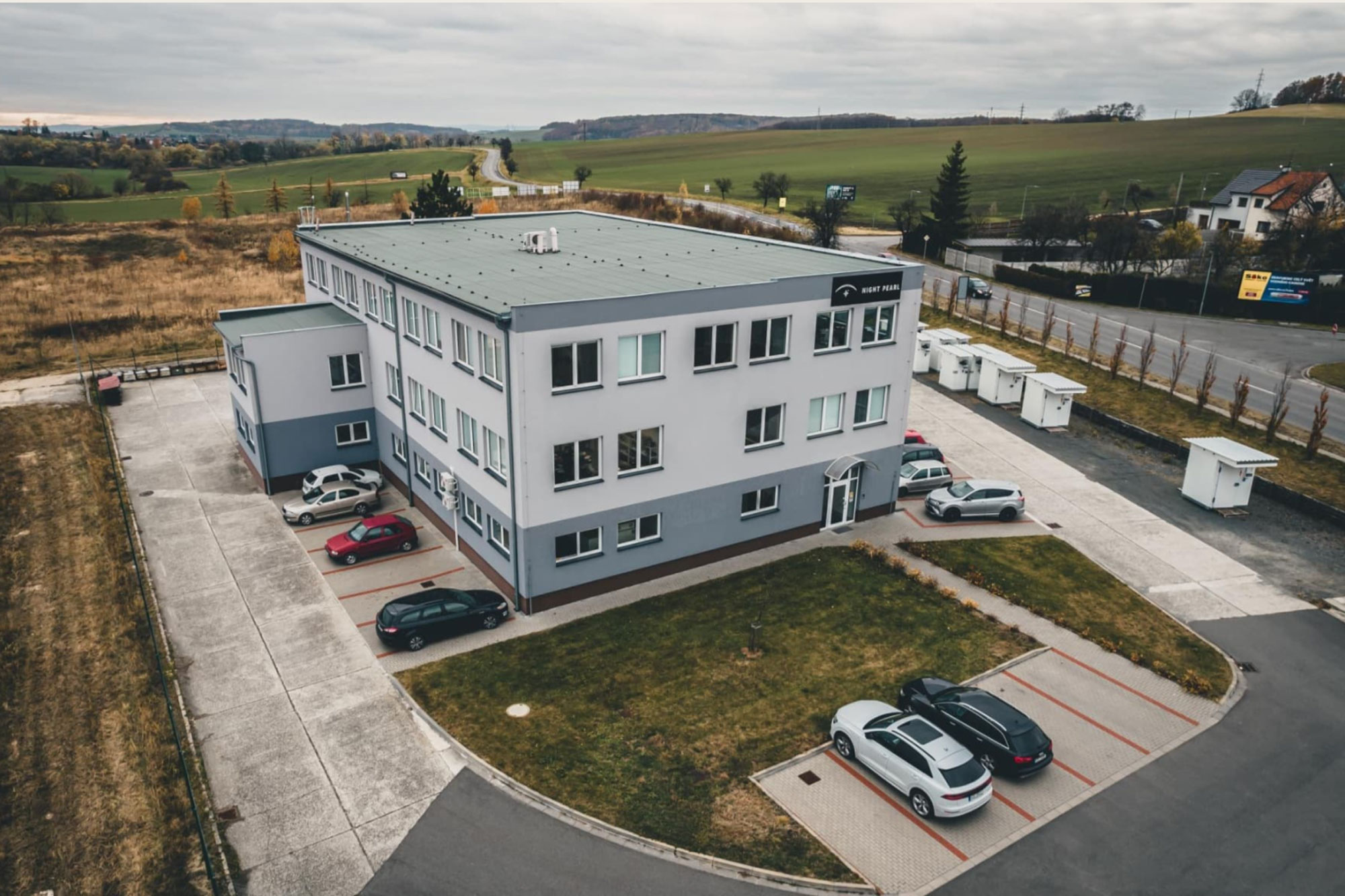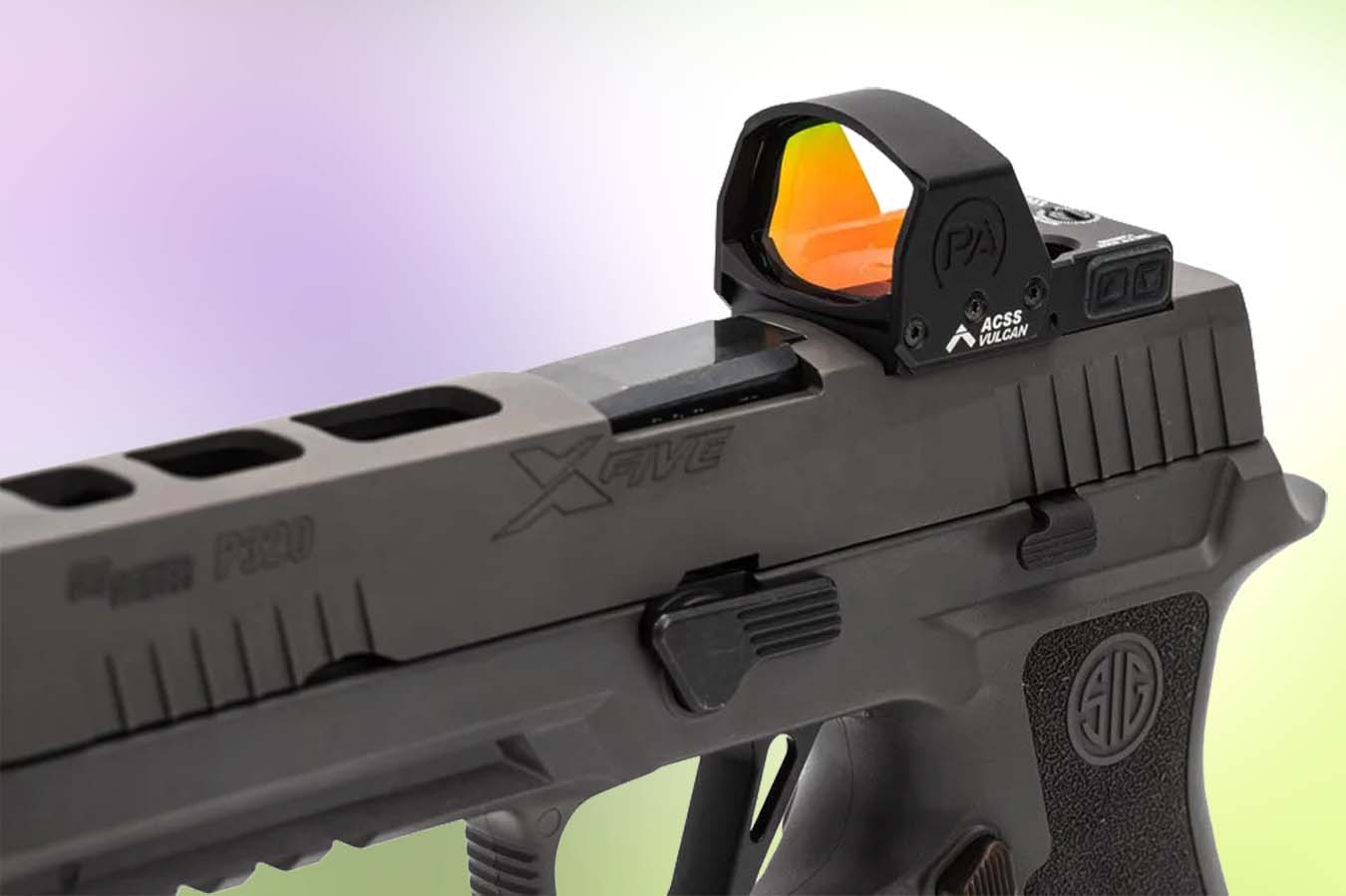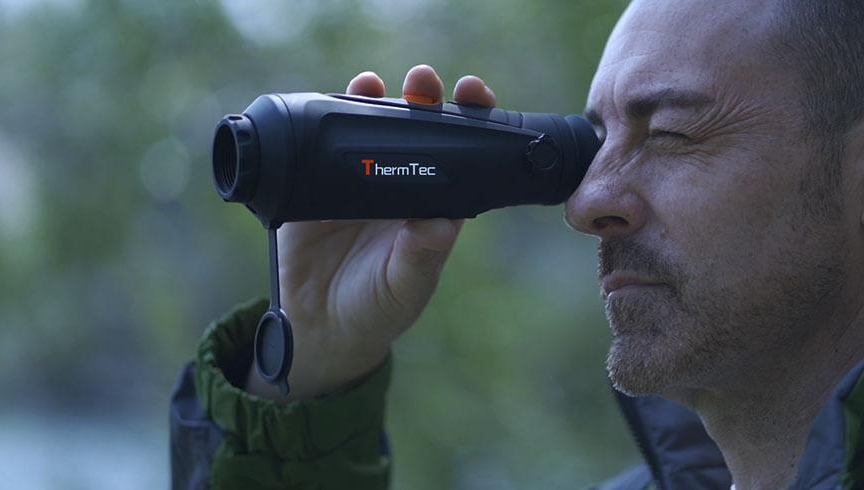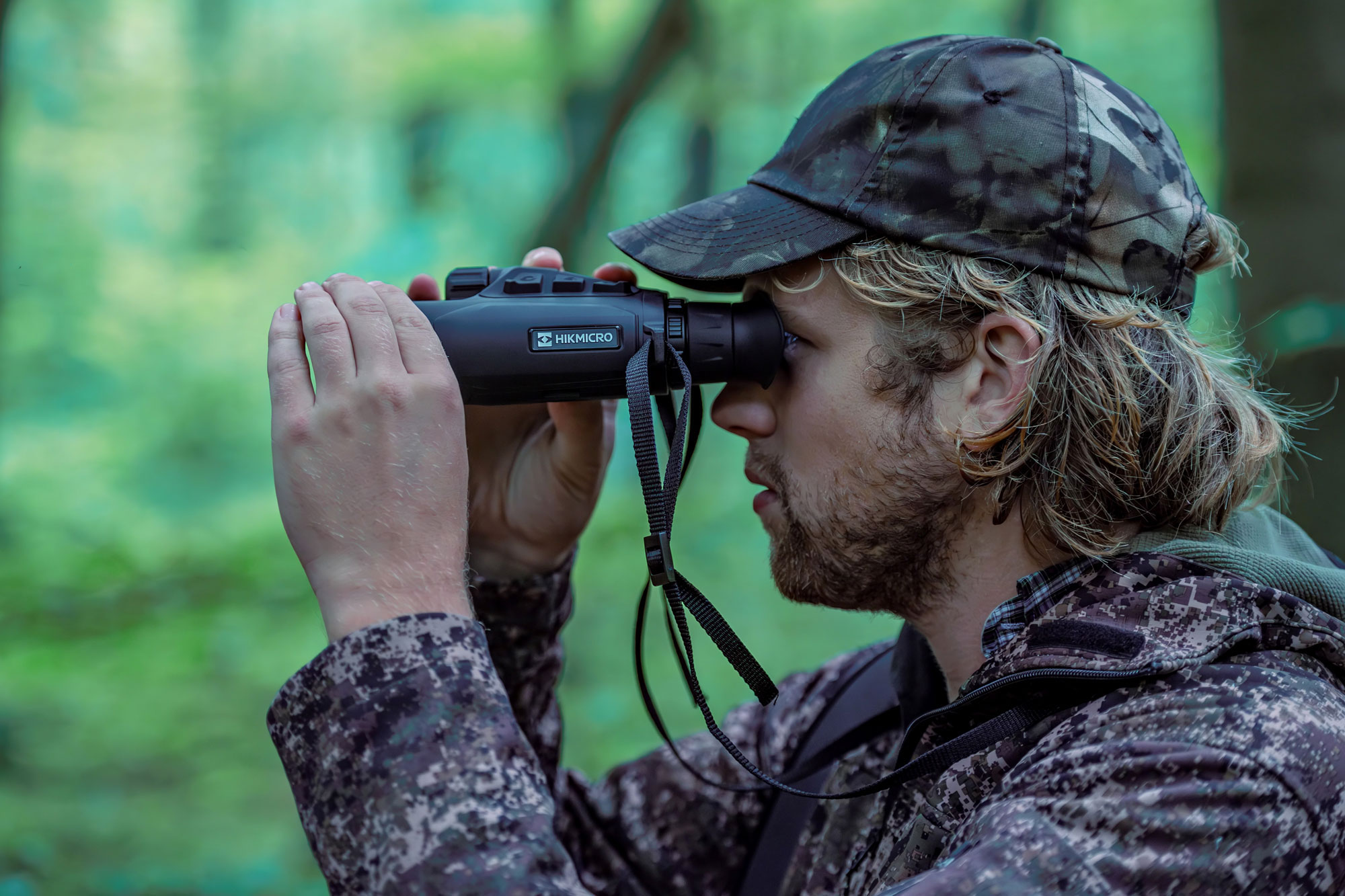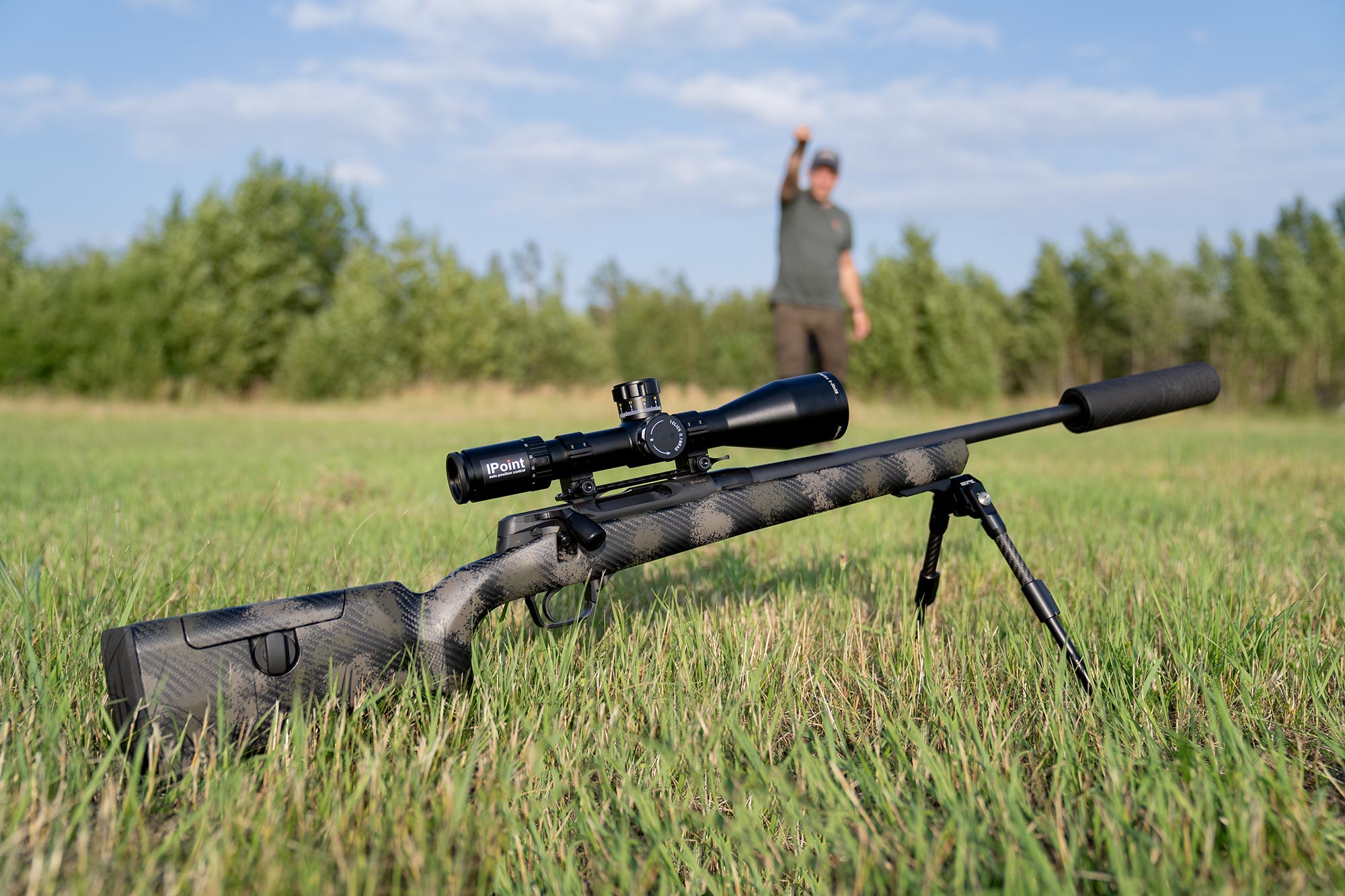Undoubtedly, the most popular optical instrument is the binocular, extensively employed today in an amazingly wide field of use, ranging from military and civil engineering to astronomy, bird watching, leisure sightseeing, hunting, sports, and maritime applications.
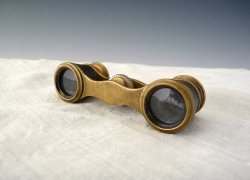
The birth of this instrument dates back to the 17th Century: the very first “binoculars” were reported as early as 1608, in the Netherlands, almost at the same time of the patent of the telescope based on refractive optics by Jan Lippershey.
A refractive telescope is essentially composed of a lens which captures the light and sends it to an eyepiece, which then magnifies the image and sends it back to the eye of the observer.
Only months later, Lippershey paired two such telescopes into one instrument, although failing to obtain a patent for the binoculars as well.
Binoculars are optical instruments which allows the user to experience a magnified vision of an observed object maintaining true stereoscopic depth discrimination, since the instrument is built using two telescopes which are paired together and carefully aligned in order to allow for the use of both eyes simultaneously.
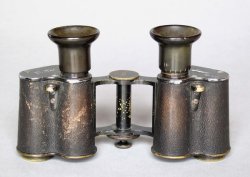
In layman’s terms, most of our three-dimensional visual perception is based upon the lateral displacement of the eyes, providing two slightly different views of the same object (disparate images) which form a merged view in the brain with the impression of depth (stereopsis).
Large, cumbersome and heavy, the binocular since their inception have enjoyed limited popularity due to the limits of the Galilean optical technologies of the time, used because a Galilean telescope yields an upright image; the first breakthrough happened in 1854, when Ignazio Porro patented a system to erect the image observed within the instrument through the use of prisms.
Thanks to the combined efforts led by optics designer Ernst Abbe, who would refine Porro’s set of prisms, Otto Schott, a manufacturer of glass-made optical material and Karl Zeiss, a manufacturer of optics instruments, in 1894 the very first modern prismatic binocular with Porro-style prisms were presented to the public.
How do Binoculars work?
Binoculars may appear to be quite simple objects, but in fact their manufacture is rather complex in technical terms; complexity that does not end with the challenge of designing and building high quality optics for the single telescope, but also in the correct alignment between the two optical instruments and in achieving their optical coherence, as they need to be exactly identical.
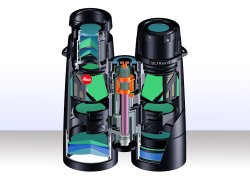
The simplest version of a telescope sends back an image which has been rotated by 180 degrees, so that in practice we would see it upside down.
Unlike most telescopes, which rely on a set of additional lenses to erect the image, modern binoculars employ a set of prisms both to rotate the image and to reduce the instrument size (by folding the path taken by the light beam).
Two optical schemes are usually employed. One includes a pair of prisms arranged according to the traditional Porro configuration, while the other is based upon a two-roof prism scheme.
It is easy to distinguish one optical scheme from the other. All modern binoculars where objective lenses are visibly staggered with respect to eyepiece axis are equipped with a Porro prism, while coaxial eyepiece binoculars have roof prisms.
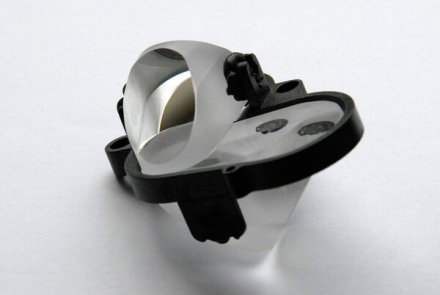
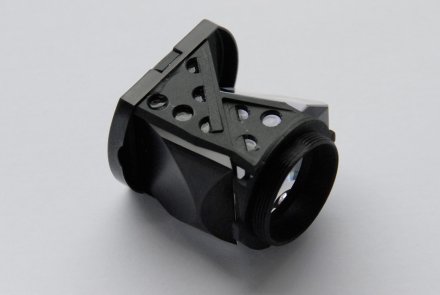
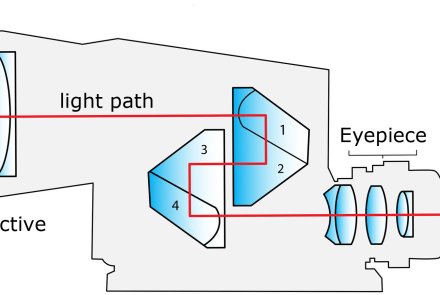
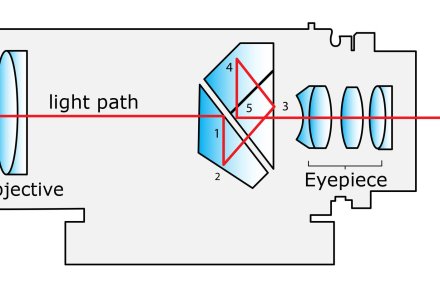
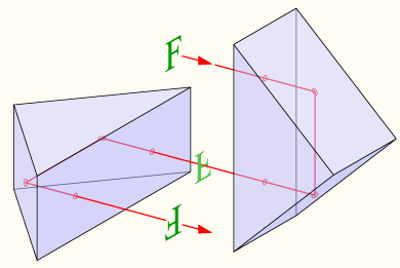
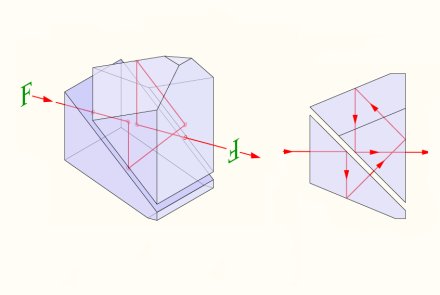
Manufacturing binoculars using roof prisms is more expensive and difficult than the manufacture of traditional Porro prisms binoculars. In addition, due to a greater number of air / glass light path passages – at least in the Schmidt-Pechan configuration, which is the most widely used because of its consistency and compactness – a greater internal dispersion of light can occur.
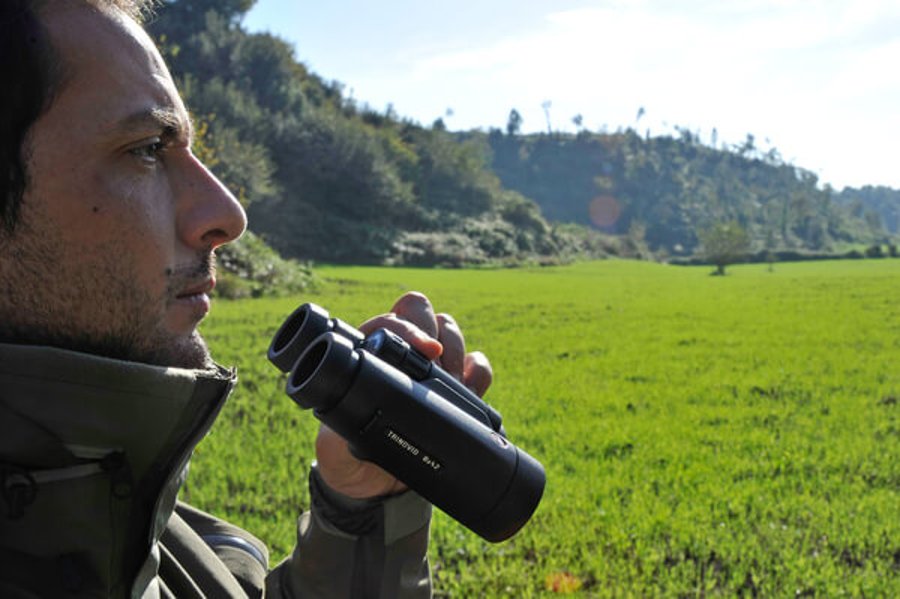
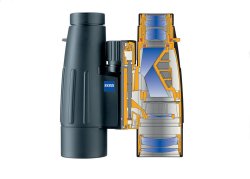
Schmidt-Pechan roof prisms also require special surface treatment for phase correction (shortened in PC).
This is usually done in order to avoid loss of contrast and/or additional chromatic aberrations (such as interference), as well as to create brand-new refraction surfaces (mirrors), which respond to excessively small refraction angles which are not sufficient in attaining the total internal refraction which is given when exceeding the critical angle.
Using very expensive dielectric coating, instead of the more common metallic mirror coatings (aluminum or silver), a reflectivity of more than 99% can be obtained.
The Abbe-Koenig prism configuration also exists which is, however, much more cumbersome in binocular design, needing double the length of Schmidt-Pechan to be used, but at the same time yielding improved light transmission.
Abbe-Koenig prism equipped binoculars are generally very high end and therefore also very expensive.
If we compare two binoculars with similar performance and specifications, all other things being equal – i.e. quality of materials used and quality of the manufacturing process – the one equipped with roof prisms will have a considerable advantage in terms of ergonomics, short-distance focus possibilities (less than 3 m) and an excellent eye relief value (from 16 mm up), in addition to having a lighter weight, a smaller size and a cleaner and more elegant look.
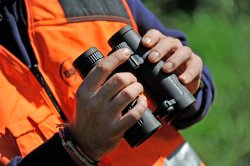
However, the binocular equipped with traditional Porro-style prisms will score better in terms of optical performance, with cheaper costs of production.
Furthermore, although the use of roof-prisms usually makes for more compact binoculars, the greater distance between the lenses-axis as ensured under the traditional Porro prism scheme allows for a deeper three-dimensional perception of the objects observed, even at considerable distance.
From a quality point of view the gap between the two has recently narrowed, and in some cases nullified. As a result, high-end roof prisms binoculars are practically able to match the performance of traditional Porro binoculars. Unfortunately, quality does come with a price. Quality being equal, binoculars with roof prisms are usually 25 percent more expensive than traditional Porro equipped ones.
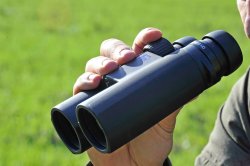
Binoculars also have to employ mechanical solutions to focus both telescopes simultaneously, and integrate a diopter adjustment to correct natural differences in visual acuity between the user’s eyes.
Almost all binoculars offer a focusing wheel built on the bridge, between the pair of telescopes, which transfer the movement inside the telescope bodies using high precision gears; some binoculars offer diopter adjustment the same way, while most others integrate it on the right hand eyepiece.
The current trends, which are heavily driven by consumers’ esthetic taste, have recently set in favor of those products equipped with roof prisms. As a result, big manufacturers have oriented their research and development efforts in this direction. The seven binoculars we test today are all equipped with roof prisms- and all are based upon a variation of the Schmidt-Pechan configuration.
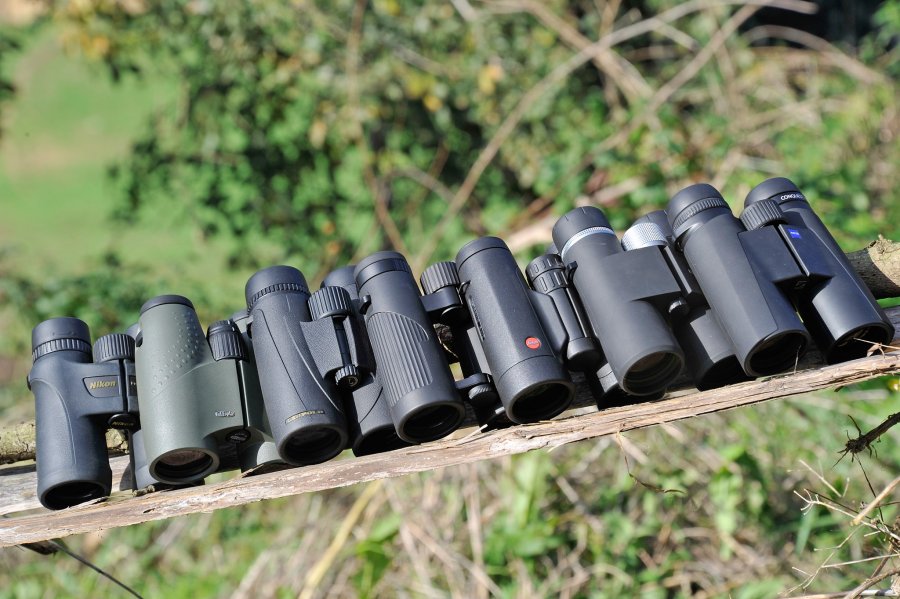
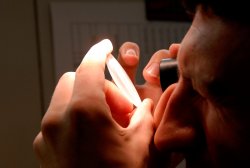
The seven contenders
All4shooters and Visier chose seven 8x magnification binoculars, all priced at the 1000 Euro market segment (retail pricing may vary substantially above and below the 1000 Euro threshold in some European countries according to local VAT taxation; for the purpose of this article, a VAT of 19% has been calculated), with an objective lens diameter as close as possible to the canonical 42mm.
All the instruments tested are in fact 8x42, with the exception of Minox, which submitted an 8x43 sample.
The tested models are: Docter Optik 8x42 ED, Meopta Meostar B1 8x42, Minox HG 8x43, Nikon 8x42 Monarch 7, Leica 8x42 Trinovid, Leupold 8x42 McKinley HD and Zeiss Conquest HD 8x42.
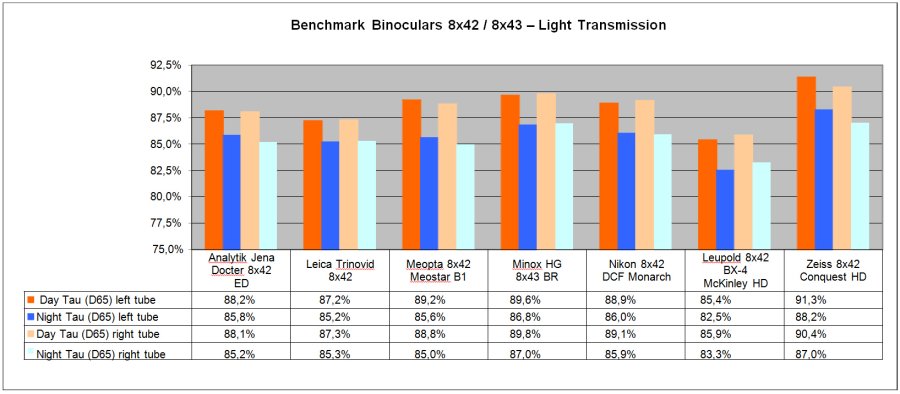
Why the sub-1000 Euro market segment? As a matter of fact, this price range includes the most interesting models, as all tested samples benefit from each manufacturer’s high end products’ state of the art technology, design and patents, and at the same time remain relatively affordable: the ‘sweet spot’ between performance, quality and price.
How all4shooters.com and Visier tested the binoculars
For the very first time, the manufacturers agreed to have their samples fully tested officially in an Optical Lab officially following the DIN ISO 14490-1,2-5,6,7, Optics and optical instruments - Test methods for telescopic systems, and DIN ISO 10109-4, Optics and optical instruments - Environmental requirements. DIN ISO 14490 is a multipart test methodology, that includes tests for basic characteristics, test methods for binocular system, light transmittance, veiling glare index, and limit of resolution.

In addition to the objective tests, which have been carried out in Karl Zeiss, Minox and Leica Camera optical laboratories, All4shooters’ editors also tested the established subjective tests, of each binoculars sample’s design, usability, packing, instruction and included accessories.
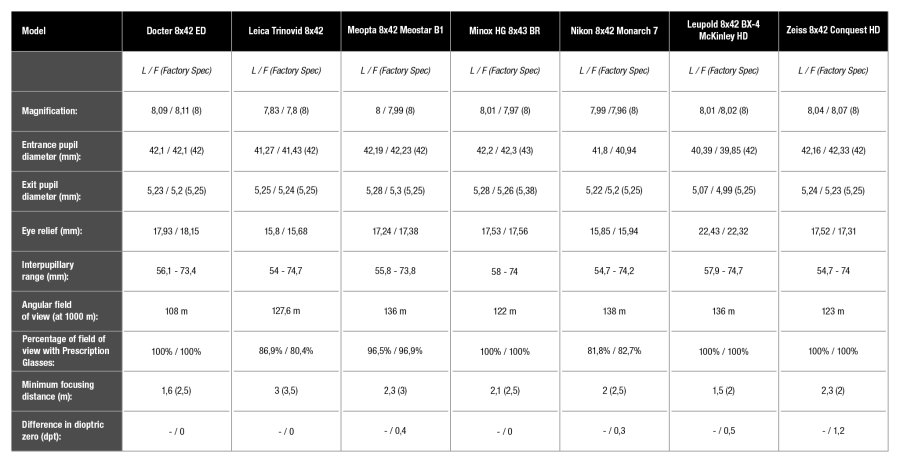
The final evaluation of each instrument thus takes into consideration the objective performance test measurements, subjective test and retail price. Worthy of note is that our tester evaluated subjectively the binoculars before having access to the lab results, as not to be biased in regards to the performance opinion; only after, we would compare subjective vs. objective results to confirm and consolidate final judgment.
It is important to keep in mind that all measurements are relative to each specific binocular sample we received from the manufacturers, and may be (or not) representative of the whole production.
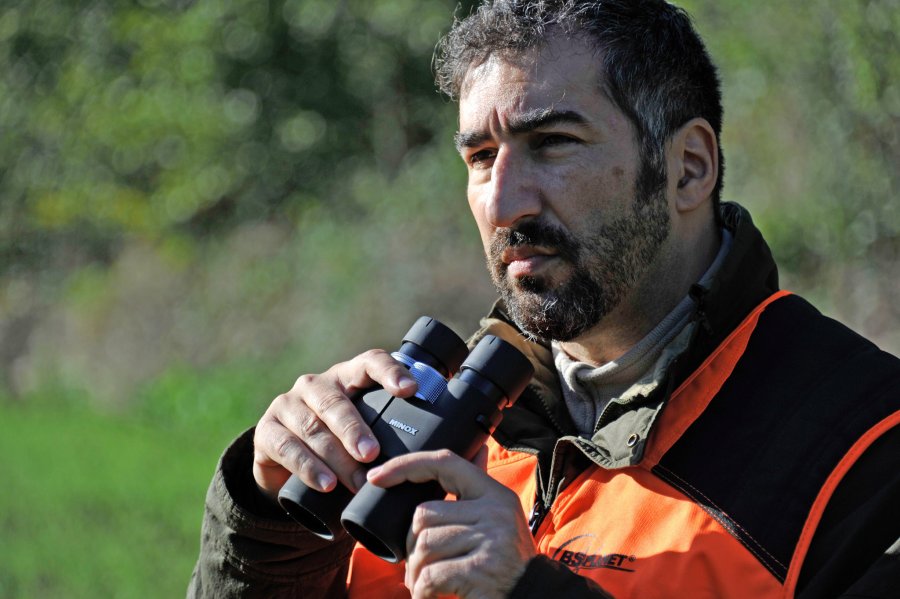
Wrap-Up
The winner of this group test, in the subjective evaluation, is the Zeiss Conquest HD 8x42, with the Minox HG 8x43 a close second and the Leica 8x42 Trinovid third; a bit farther back we can find the Docter Optik 8x42 ED and, very close, the Leupold 8x42 McKinley HD. The Meopta Meostar B1 8x42 follows, while the Nikon 8x42 Monarch 7 closes this test, ending last.
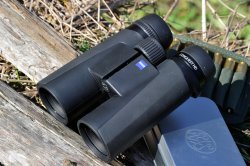
Zeiss Conquest HD 8x42
Zeiss once again proved their lead with the Conquest HD, and this time the German manufacturer did so with a very competitively priced instrument that actually impressed our tester beyond the lab numbers (among these, the Conquest HD features the best daytime light transmission of all tested binoculars), specifically because of an excellent balance among all features: the best "bang for the buck", in a nutshell.
We also believe that they are the best looking instrument of the group, both the Leica and Minox coming a close second, in our very personal opinion.
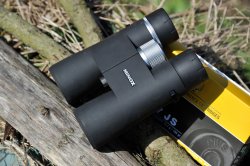
Minox HG 8x43
Minox has been a very pleasant surprise, with an outstanding and very balanced overall performance: the Minox HG 8x43 features one of the best light transmission measured figures of the whole test batch, second only to Zeiss, and the veiling glare figures are also the best of the batch ex-aequo with the Leicas, in this case Zeiss comes second.
Click here for the Minox article
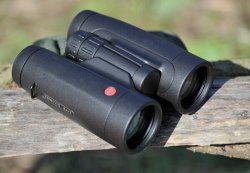
Leica Trinovid 8x42
The Leica 8x42 Trinovid defended its third position fair and square, this binocular’s performance featuring peaks of absolute excellence, and very few quirks (including the shortest measured eye relief of all test binos, which is roughly 15,7mm), with a very marked distance from the follower up Docter.
In regards to materials used, mechanical precision and, manufacture qualty, the Trinovid must be considered the best of the whole test.
The Trinovid also sports the highest price tag of the roundup, which somewhat affected the price / performance ratio.
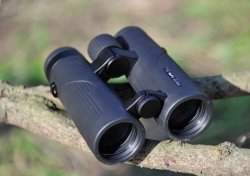
Docter Optik 8x42 ED
Fourth comes the Docter Optik 8x42 ED, thanks to its open bridge hinge design, one of the most ergonomic (if not the most ergonomic) binocular tested in this roundup; this binoculars also follows the Leica because it suffers of a narrow angle of view and edge aberrations.
Click here for the Docter Optik article
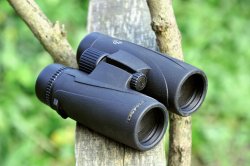
Leupold 8x42 McKinley HD
Leupold’s McKinley 8x42 HD favorably impressed us, but was hindered by weight, with 822g the McKinley is the second heaviest binocular in our test group, and the lowest measured light transmission figures of the group at about 85,5% (83% at night), which translated to a dimmer image.
The price tag reflects the fact that it's an imported product, subject to duty and other taxes, which affects its price/performance ratio.
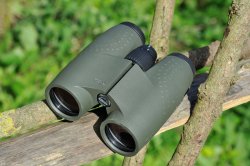
Meopta Meostar B1 8x42
Behind the Leupold, the Meopta Meostar B1 8x42 follows.
Beyond its generally good, and surely above average, purely optical performance, we found this binocular cumbersome and uncomfortable in actual use.
With a weight of 890 grams, it’s also the heaviest binocular of our group test.
Click here for the Meopta article
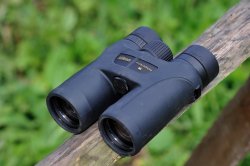
Nikon 8x42 Monarch 7
Last but not least, we have been mildly disappointed with the Nikon 8x42 Monarch 7, of which we held higher expectations than ascertained, based on its manufacturer’s declared specs.
On the positive side, the field of view is indeed the best of all tested binoculars, and the price tag is the most affordable.
By all means it is a more than decent optical instrument, but the geometric distortions, darkening at the edge, together with a slight focus reduction - while the measured eye relief is only a touch above the Leica Trinovid, and below all the rest of the tested samples - together with the average build quality, push the Nikon back when compared to the other binoculars tested today.
Click here for the Nikon article



